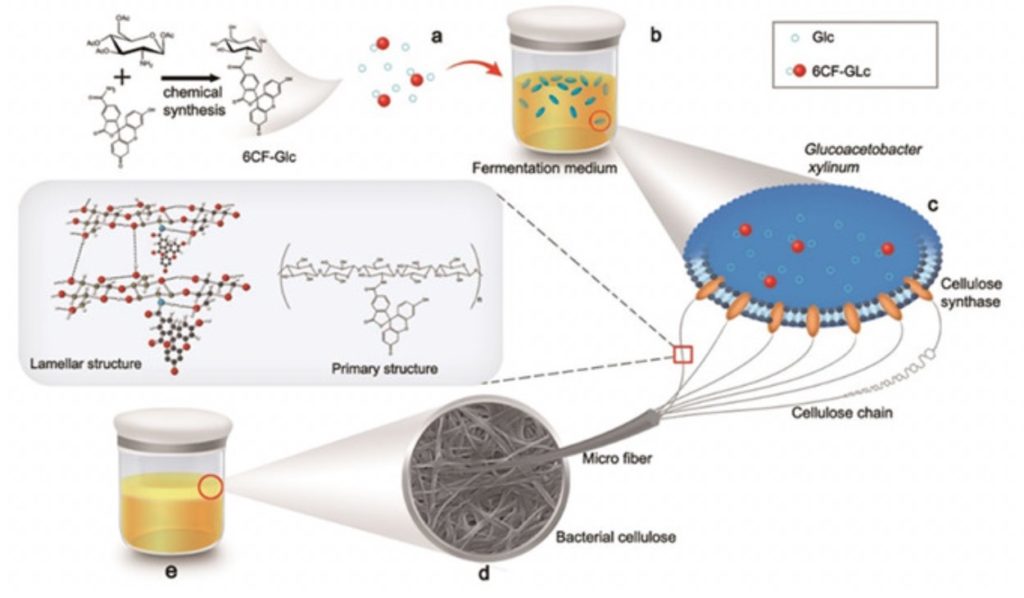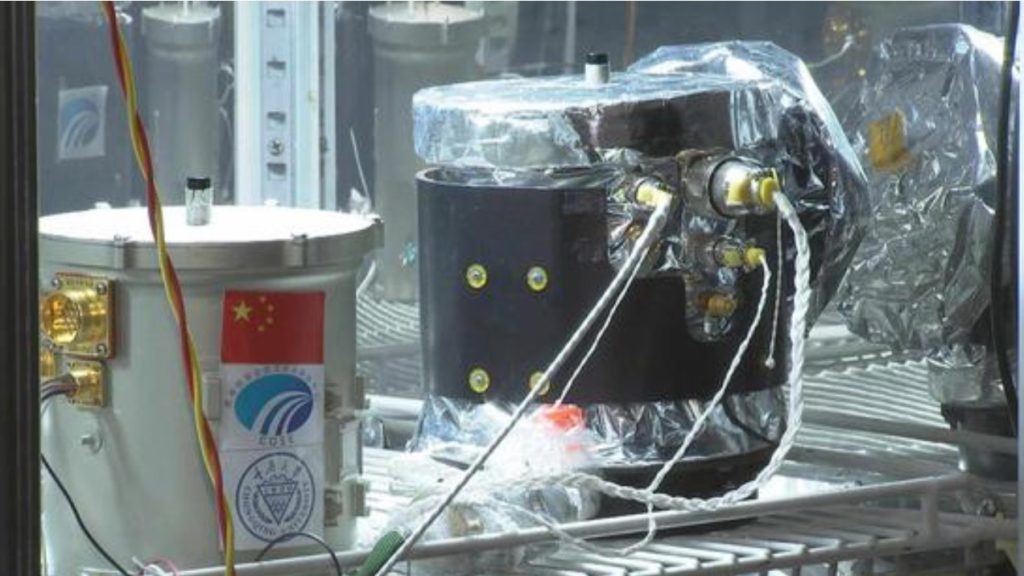China in Africa
Chinese consortium wins tender to upgrade railway line in Namibia

Three Chinese companies, China Gezhouba Group, Qingjian Group and Unik Construnction Engineering, have won contracts to upgrade the railway line between Walvis Bay and Kranzberg, Namibia. The project is being funded through part of a loan secured by the Namibian government from the African Development Bank. Chinese companies have completed infrastructure projects in Namibia including a container terminal, oil storage facilities and several road upgrading and construction projects.
Xinhua news release, January 23, 2020
No Results Found
The page you requested could not be found. Try refining your search, or use the navigation above to locate the post.
Window-to-China
8000 taxis in Italy accept payment of fares by Alipay
According to the report, the Italian taxi federation URI has accepted payment by Alipay, a subsidiary of the Alibaba group. Chinese customers who visit Italy can now pay in many cities such as Rome, Milan, Florence etc. by their mobile phones. According to a Nielsen market report, settlements by Chinese customers exceeded already cash settlement last year.
Japan JST China news, January 29
CAS QIBEBT team prepares modified bacterial cellulose
A research team led by XIAN Mo and ZHANG Haibo from the CAS Qingdao Institute of Bioenergy and Bioprocess Technology has developed a new method for the preparation of modified bacterial cellulose. Using the microorganism Komagataeibacter sucrofermentans, they prepared a functionalized nanobacterial cellulose, modified with 6-carboxyfluorescein, using 6-carboxyfluorescein-modified glucose as a substrate. The results keep promise that various substituents can be incorporated into cellulose by in-situ fermentation.
CAS news release, January 28, 2019

CAS Shanghai Center for Plant Sciences sequences genome of broomcorn millet
Broomcorn millet (Panicum miliaceum L.) was domesticated on the Loess Plateau of Northern China as early as 10,000 years ago. It achieves the highest amount of grains produced with the same amount of water. ZHANG Heng and ZHU Jiankang from CAS Shanghai Center for Plant Stress Biology have sequenced the genome of this plant and laid the foundation for studying the exceptional stress tolerance of this plant as well as its C4 biology.
CAS news release, January 28, 2019

China reports large shale gas discovery in western Hubei province
China’s Geological Survey Agency has reported the discovery of 11,7 trillion (11,7 x 1012) cubic meters of shale gas reserves in western part of Hubei province. Preliminary tests on hydraulic crushing were promising, and might eventually lead to an annual production of 10 billion m3.
Japan JST China news, January 28, 2018
CAS-led consortium scales hydroxymethyl furfural (HMF) production to 2000 t/y
The group of ZHANG Jian at CAS Ningbo Institute of Materials Technology and Engineering, in collaboration with Zhejiang Sugar Energy Technology Co., have developed a green and economical technology to produce HMF from fructose. Both catalyst and solvent were recycled at a scale of 2,000 t/a of HMF. To speed up the industrialization process, the team also completed the fructose dehydration step at a scale of 10,000 tons of HMF annually, achieving a molecular yield above 82%.
CAS news release, January 25, 2019
Chinese New Year traffic peak is supported by AI and robots
The New Year travel rush in China has started 15 days before the Spring Festival, which takes place on 5 February. Within 40 days, from January 21 to March 1, China’s transportation systems are preparing for nearly three billion passengers as people travel to family celebrations across the country. At several major train stations such as Beijing or Hangzhou, facial recognition technology is being used so that passengers can check in with their identity cards in just two seconds. Some stations have installed robots that can communicate with passengers and answer general queries on topics such as train schedules and weather information in destination cities. Online payment for train tickets and payment with the popular Alipay mobile payment system is tested on several major routes.
People’s Daily German version, January 24, 2019

A green neighborhood may lower mortality of elderly people by 27 %: Chinese study
According to a study over 14 years carried out on over 23,000 people aged 80 or older residing in 22 provinces of China, those who had the highest “vegetation index” within 250 meters of their home had a mortality rate 27% lower compared to those with the lowest vegetation index.
Lancet, DOI:https://doi.org/10.1016/S2542-5196(18)30264-X
CAS Ocean Research Institute solves genome of shrimp
A team led by Jianhai XIANG and Fuhua LI solved the genome of shrimp (Penaeus vannamei) and obtained a high-quality shrimp genome reference map. Decapod crustaceans contain a large number of important aquatic species, such as shrimp, crab, lobster, etc., and Litopenaeus vannamei is the first among the four cultured shrimps, with an annual output of 4.16 million tons. Prawns have a highly developed vision system, a pair of compound eyes that connect freely moving eye stalks. Each compound eye contains about 5.5-8 million small eyes resulting in a wide viewing angle. Comparative genomics analysis revealed that the long-wavelength opsin gene in the shrimp genome is significantly expanded, which may be related to the organism’s adaptation to the dark benthic environment. The nerve conduction velocity of shrimps is 200 ms-1, the fastest among reported species. A large number of gene families related to nerve signaling are significantly expanded, especially, glutamate and glycine receptors.
CAS news release, January 23, 2019
CAS Kunming Institute of Botany engineers astaxanthin and DHA production in Aurantiochytrium sp.
The team around Chun Chao HUANG overexpressed geranylpyrophosphate synthase of Archaeoglobus, Escherichia coli isopentenyl pyrophosphate isomerase and Vitreoscilla hemoglobin in this marine microalgae, resulting in not only 1.85- and 5.02-fold increases of total carotenoids and astaxanthin, but also 2.40- and 2.74-fold increases of total fatty acids and DHA.
CAS news release, January 22, 2019
China Earthquake Administration sees advances in disaster prevention
At the national conference of the China Earthquake Administration in Beijing, the following data were released: (1) the average number of earthquakes > M5.0 were 24 per year since 1950, and 16 in 2018, (2) in 2016, there were no earthquakes > M6.0 and there were no dead, (3) earthquake resistance and disaster prevention ability improved; seismic isolation technology was applied to over 1,300 newly constructed projects, active fault surveys were developed for 17 cities, and risk assessment classification was completed for 16 cities and states, (4) time for automatic earthquake information reports was shortened from 3 min in 2017 to 2 min.
Xinhuanet, January 18, 2019

Chang’e-4’s lunar lander sprouted cotton-seeds for 9 days
In an experiment to popularize space science, sprouting cottonseed was taken up to the moon by China’s Chang’e-4 Lunar Exploration Program on January 3. The payload has a heating system which kept the seed warm for sprouting. When the payload turned off after the Chang’e-4 lander entered sleep mode to save energy on January 13, the plant died quickly of extreme cold. During the 212.75 hours from power-on to power-off, the payload worked well. Some of the results exceeded expectations, as explained by XIE Gengxin, the payload’s designer and dean of Chongqing University’s Institute of Advanced Technology. The payload transmitted more than 170 pictures back to the Earth.
CAS news release, January 18, 2019

Xuan paper: a Chinese heritage made fire-resistant and durable for several thousand years
Xuan paper is a unique high-quality paper originating in ancient China. It is considered the best material for the calligraphy and painting andhas a reputation as “the king of paper that lasts for 1000 years”. 2009 it came on the UNESCO list of Intangible Cultural Heritage of Humanity. Xuan paper is produced only in Anhui province from the bark of Pteroceltis tatarinowii, a common species of elm, with limestone particles deposited on the surface which can neutralize acids produced by the hydrolysis of plant fibers and from the environment. A team around ZHU Yingjie from CAS Shanghai Institute of Ceramics now developed an improved kind of “fire-resistant Xuan paper” based on ultralong hydroxyapatite nanowires used as the main building material and micrometer-sized silica glass fibers as the reinforcing framework material. In addition, a new kind of inorganic adhesive composed of amorphous nanoparticles was added. The production process is simple, highly efficient, and needs only 3~4 days. The original whiteness of the new Xuan paper was 92%, and whiteness retention was 94.2 % after simulated aging for 3000 years. When exposed to different kinds of mould spores, even in the presence of nutrients, they did not grow. The most important property is, however, that the new Xuan paper is fire resistant and exhibits high thermal stability.CAS news release, January 18, 2019
CAS news release, January 18, 2019

Genome editing may lead to improved vascular cells
A team from CAS Institute of Biophysics, Institute of Zoology and Peking University has prepared human vascular cells with improved self-renewal and increased resistance to oxidative injury. In human ESC-derived vascular cells, they engineered FOXO3, an evolutionarily conserved longevity factor, to a more stable homolog by replacing two nucleotides in exon 3 of the FOXO3 gene that inhibit the phosphorylation and subsequent nuclear export and degradation of FOXO3, thus promoting the nuclear translocation of the FOXO3 protein and expression of its target genes. When tested in a therapeutic context in a mouse model, these cells promoted vascular regeneration of ischemic injury and were resistant to tumorigenic transformation both in vitro and in vivo. Mechanistically, constitutively active FOXO3 conferred cytoprotection by transcriptionally downregulating CSRP1. The study is seen as a promising option for future regenerative medicine.
CAS news release, January 18, 2019
China announces first graphene national standard
Science Daily reported that China’s first graphene national standard “China’s ninth technical term part 13: graphene and related two-dimensional materials” (GB / T 30544.13-2018 ) was officially announced. According to the standard, graphene can be composed of single or multiple layers, closely bonded to adjacent atoms and must have a dimension in the nanoscale or less.
Japan JST China news, January 18, 2019
Baidu presents AI-based language recognition software which responds to dialects
The software is based on Multilayered Attention Modeling (SMLTA) which has increased the accuracy of on-line voice authentication by 15%. Current input software is mainly used for mobile terminals, but in the future it will be applied to interaction between various smart devices and users. With the progress of voice input technology that mixes Chinese, English and dialect, users will realize “free talk”, even if Chinese and English are mixed, or if Mandarin is changed to home dialects. Baidu’s overseas input software also allows for Japanese identification, Hindi recognition, and has an Hindi-English mixed input function.
Japan JST China news, January 18, 2019
